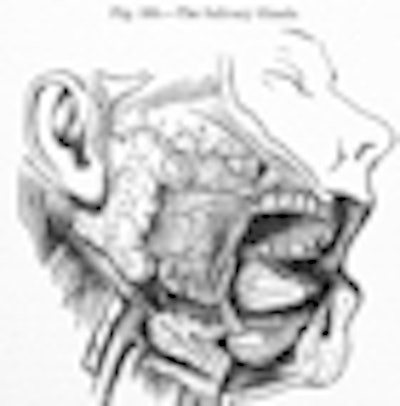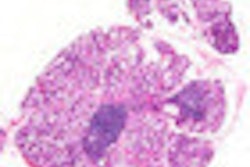
Studies have shown that Sjögren's syndrome can be one of the trickier oral diseases for dental professionals to diagnose (Journal of the American Dental Association (December 2008, Vol. 139:12, pp. 1592-1601). Experts have debated whether the problem stems more from a lack of knowledge about Sjögren's or from uncertainty about who is ultimately responsible for making the diagnosis.
Perhaps the diagnostic process itself is the issue.
While it is possible for a dentist to diagnose primary Sjögren's by asking a patient questions about their symptoms, measuring their tear and saliva flow, and sending them to a lab for a blood test, the American-European Consensus Group's Revised International Classification Criteria for Sjögren's Syndrome requires that a patient have at least four out of the six categories of signs and symptoms in order to receive a positive diagnosis for Sjögren's -- and one of those four must include testing positive for the anti SSA or anti SSB antibodies.
“We need more evidence that a noninvasive test can be effective.”
— Mike Brennan, D.D.S., M.H.S., director
of the Sjögren's Syndrome and
Salivary Disorders Center
If the blood work comes back negative but Sjögren's is still suspected, the next step is to do a salivary gland biopsy -- an invasive procedure that involves removing a piece of the lip containing several tiny glands. While the procedure is not expensive, it can be painful and does require additional time and expertise to perform.
Another option -- more typically used in Asia -- is the sialogram, which is both invasive and expensive. In a sialogram, a baseline radiograph of the salivary gland is taken, a catheter is inserted into opening of the gland duct, and a radiopaque dye is injected. A series of radiographs are then taken to determine the flow of the salivary fluid, the rate of fluid excretion from the gland, and the presence and location of any obstructions.
"It's not as invasive as a lip biopsy, but you still have to inject the dye and do the x-rays, so it is a bit uncomfortable," said Mike Brennan, D.D.S., M.H.S., director of the Sjögren's Syndrome and Salivary Disorders Center at the Carolinas Medical Center in North Carolina. "It is a commonly done procedure [in Japan] but not a cheap diagnostic test to do."
A different approach
These issues prompted researchers from Hokkaido University Hospital and Hokkaido Graduate School of Dentistry to consider a less invasive and less expensive technique for diagnosing Sjögren's: ultrasonography, an ultrasound-based imaging method (Oral Surgery, Oral Medicine, Oral Pathology, Oral Radiology and Endodontics, January 2010, Vol. 109:1, pp. 129-134).
"The oldest imaging procedure, sialography, has maintained its position as the method of choice for exploring the ductal system of the salivary glands because of its high diagnostic reliability," the authors wrote. "Since the 1990s, computerized tomography, magnetic resonance (MR) imaging, MR sialography, and ultrasonography have also been applied to diagnose SS. Among these, ultrasonography is the most convenient and economic examination and, furthermore, is noninvasive."
They investigated the diagnostic reliability and correlation between a diagnosis using sialography, ultrasonography, and histopathology. Their study comprised 73 patients who had undergone eye exams and blood tests for Sjögren's and had been referred to the Department of Oral and Maxillofacial Surgery and Dental Radiology for oral exams. Of the 73 patients, 36 had been diagnosed with Sjögren's following the eye exams and blood tests, while the rest continued to complain of Sjögren's-like symptoms.
Each patient underwent a sialogram, a salivary gland biopsy, and an ultrasonogram. Upon comparing the results, the researchers found statistically significant differences in sensitivities and specificities between the three techniques (p < .05). The sensitivity of sialography was 83.3%, compared to 77.8% for ultrasonography and 63.9% for histopathology, while the specificity of sialography was 94.4, compared to 91.4% for histopathology and 78.8% for ultrasonography.
"The diagnostic reliability of ultrasonography in the present study was equivalent to alternative oral examination results, salivary secretion tests, and salivary scintigraphy," the authors wrote. "Considering convenience, noninvasiveness, and inexpensiveness, using the ultrasonographic examination has advantages over the salivary secretion test and scintigraphy."
Higher correlation
The study also showed a higher correlation between sialography and ultrasonography than with histopathology, although the researchers said this could be because sialograms and ultrasonograms both investigate the parotid and/or submandibular glands, whereas histopathology investigates minor salivary glands of the lip.
"Considering the higher correlation to sialography, ultrasonographic examination can be an alternative modality to histopathology and included as a global diagnostic tool for SS," the authors concluded.
While these findings are encouraging, Dr. Brennan said there is not yet enough evidence to support substituting ultrasonography for salivary gland biopsies or sialograms when diagnosing Sjögren's.
"This is an interesting study, but we need more evidence that a noninvasive test [such as ultrasonography] can be effective," he said. "But I like that they are trying this. The research is definitely headed in the right direction."
Copyright © 2010 DrBicuspid.com



















